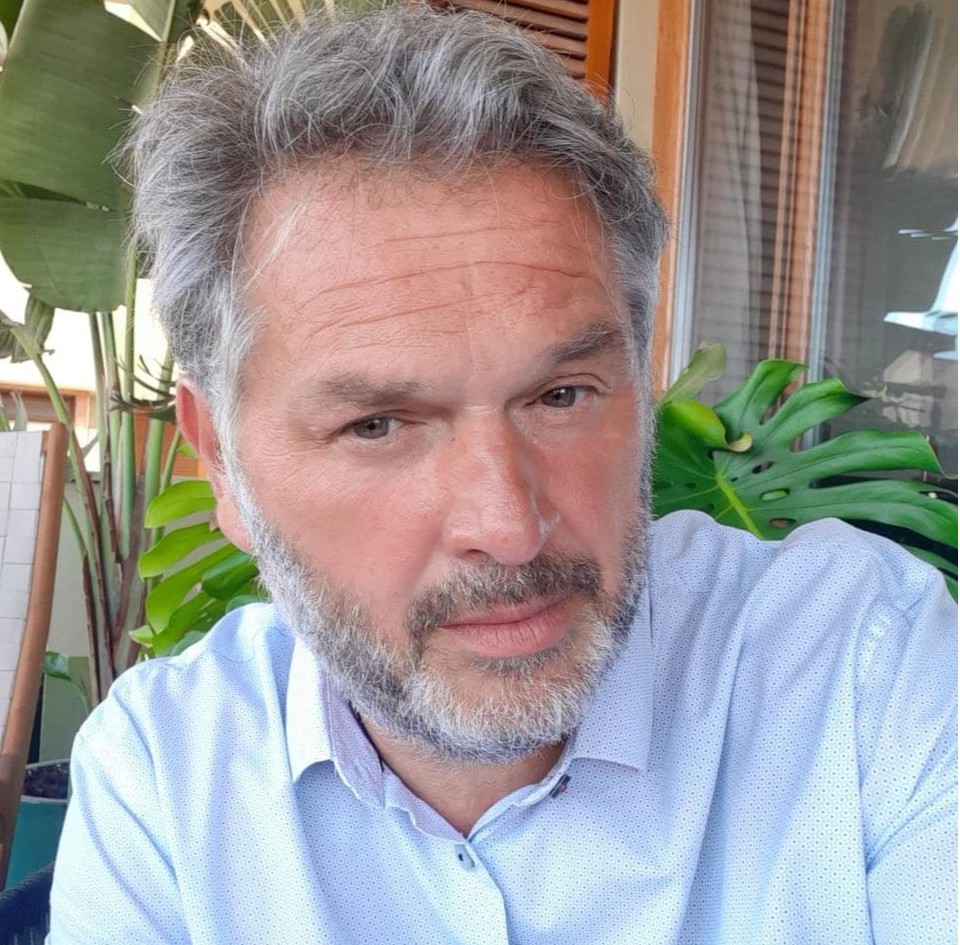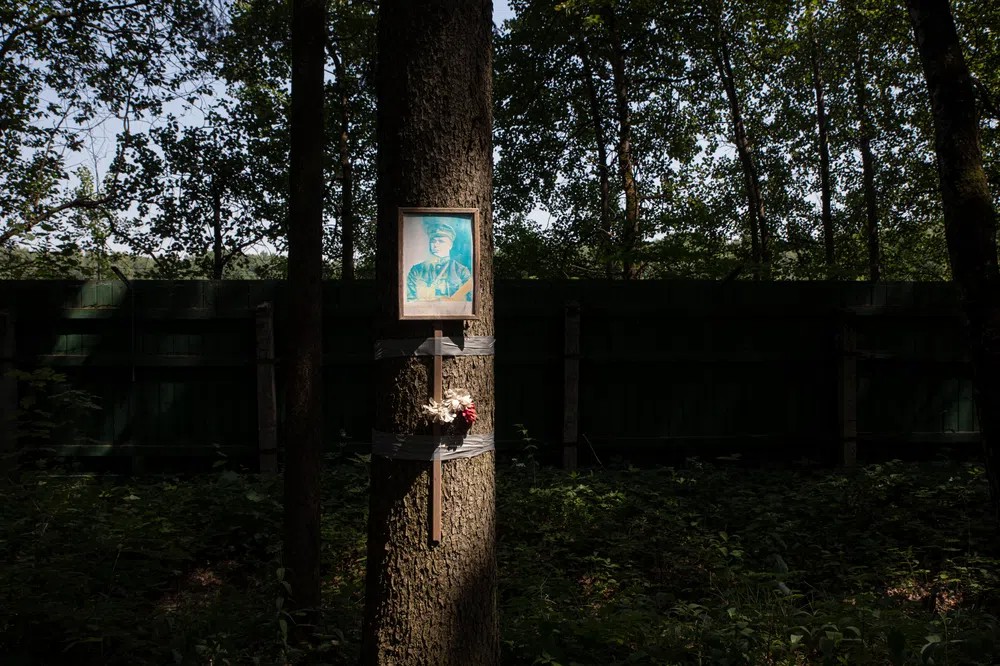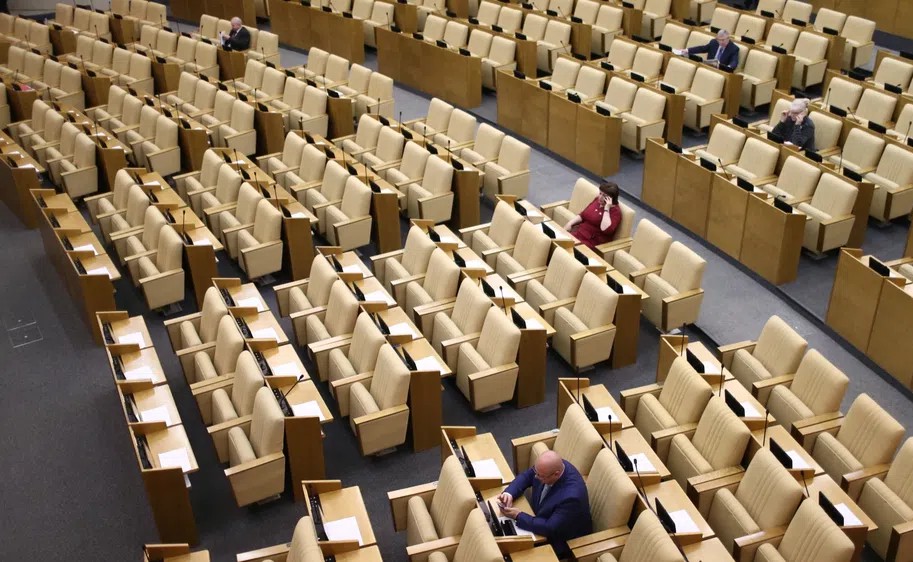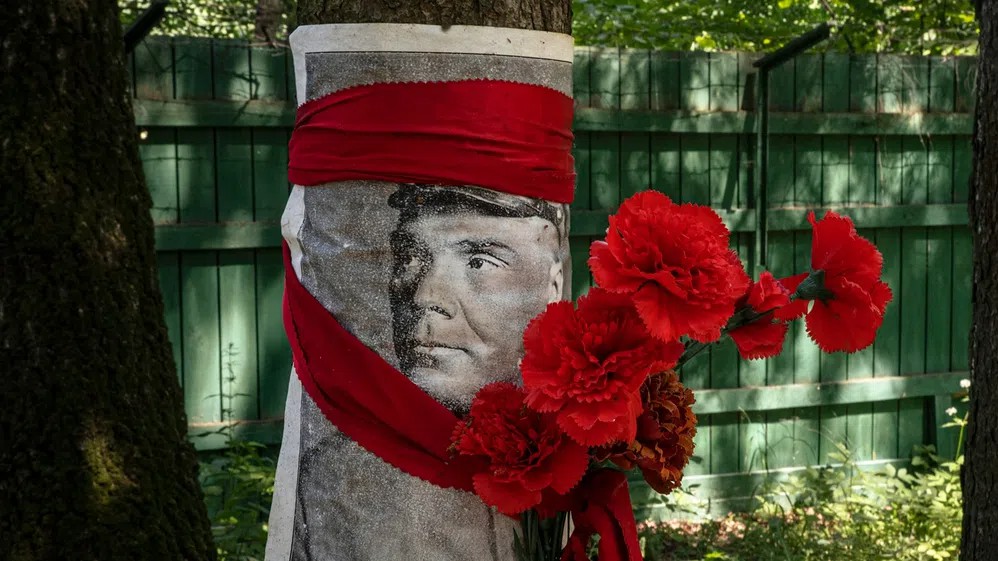Here what’s in store for you this week:
- As Russia continues to expand into the Central Africal Republic — amid allegations of fueling and aiding atrocities — we’ve landed an exclusive interview with the allegedly impossible-to-find ‘murderer’ of three Russian investigative journalists in CAR three years ago. The Kremlin blamed the crime on him. Spoiler alert: he didn’t do it;
- Mass graves from the Stalin era have been uncovered on the outskirts of Moscow. Novaya takes a trip to the secret burial site which became the final resting place of more than 6,000 enemies of the state;
- Nobody elects a large chunk of MPs in the Russian parliament. We explain the electoral trick that allows this to happen;
- Plus, 15 years on and we still haven’t seen the justice served in the case of our murdered investigative reporter Anna Politkovskaya. The statute of limitations is about to expire in her case, so we need your help amplifying a global memorial challenge we’ve just launched.
Want to get the full story? Click the links below for full-length articles in Russian.
Tracing the ‘Murderer’ of Russian Investigative Journos
Russian journalists Orkhan Dzhemal, Alexander Rastorguev, and Kirill Radchenko were assassinated three years ago in the Central African Republic (CAR). They were investigating expanding the Kremlin presence in the troubled African state. Russian authorities and Kremlin-controlled propaganda outlets launched a half-hearted investigation that eventually blamed the murder on 'the-impossible-to-find' French national named Dominique Christophe Reneto. Novaya tracked him down for an interview. Turns out he didn't do it.
NOVAYA FINDS THE 'KILLER.' The Kremlin-linked news agency RIA FAN claimed that Reneto is "a professional murderer, terrorist, and employee of the French special services." RIA FAN is among the media structures belonging to Kremlin-linked billionaire and "Putin's Chef" Yevgeny Prigozhin — whom the murdered journalists were, in fact, investigating in CAR. Prigozhinites and Russian investigators claim that they have been looking for Reneto worldwide but that he is being hidden by the French secret services. In reality, it turned out he was very easy to contact.
"I would love to meet with Russian investigators and talk to them, if necessary," Reneto told us. "It's not hard to find me. But in the three years since the murder, no Russian law enforcement agencies have reached out to me." He added that he last visited CAR in 2004 and first heard about the accusations in 2019."I was astonished by the sheer audacity. Unbelievably, Russia accuses me of killing Russian journalists. Yes, I don't like Russian expansion in Africa, but what have journalists got to do with it?" he asked incredulously.

Dominic Christophe Reneto
CONDOLENCES AND A MASSIVE COVER-UP. But first and foremost, the 52-year-old expert on French-speaking Africa expressed his condolences to the families and friends of the deceased: the renowned conflict reporter, award-winning filmmaker, and their cameraman. Orkhan Djemal, Kirill Radchenko, and Aleksandr Rastorguev, killed in 2018, were planning to shoot a documentary investigation into Yevgeny Prigozhin's activities in Africa — part of Russia's large-scale political and economic expansion on the continent — as well as his affiliation with Russia's only private military contractor, the Wagner group. Prigozhin's associates are believed to be directly involved in the murder of the three journalists.
DEMANDS FOR EXTRADITION. The version of events put forward by CAR authorities, supported by the Russian Foreign Ministry, initially claimed that the murders were committed by a "group of people in turbans speaking Arabic" who intended to commit "robbery." There was very little evidence to support this idea. It is no surprise that CAR supported the Russian Foreign Ministry's version of events: The two governments have strong relations, and in July this year, we learned that Russia sent a contingent of 600 military instructors to train personnel of the CAR government that fights insurgents in its own country.
COLONIAL HUNT FOR RESOURCES. A recent UN report stated that Russians and allied government troops have committed atrocities in the region, which "included cases of excessive force, indiscriminate killings, occupation of schools and looting on a large scale, including of humanitarian organizations," it said. Since 2017, Russia has been supplying weapons and training the military under the control of the CAR government and other forms of financial assistance. All this in exchange for lucrative mining contracts.
"By the end of 2018, [CAR President Faustin-Archange] Touadéra grew almost completely dependent on Russian resources and came to be surrounded by a dense circle of Russian advisers, instructors, and intelligence officers," said Reneto.
BACKSTORY. Kremlin-linked fixer Yevgeny Prigozhin has been doing Kremlin's 'dirty work' everywhere from Africa, Syria, and Russian "troll factories." He is under US sanctions. Novaya Gazeta has faced attacks from Prigozhin for the better part of a decade. Apart from geopolitical flexing, Africa is a growing arms and natural resources market for Russia. Prigozhin is helping with the logistics of this expansion. Apart from the Central African Republic, the Kremlin is also heavily engaged with Sudan, Libya, Mozambique, and Madagascar. The details of the Kremlin's 'big return to Africa' are often classified or concealed from the public eye.
Read the full interview with Reneto here.
Stalin’s Mass Graves of Kommunarka
On the outskirts of the second Moscow ring road, around 30km southwest from the center of the Russian capital, is the village of Kommunarka. New buildings crowd around one another, encircling playgrounds, emitting the joyful screeches of childhood. Not far from here is a high fence, beyond which there is only silence. Here, you can find a mass grave: the final resting place of some 6,000 victims of political repression — a new discovery that many in Kommunarka may not even be aware of. The facility here operated under Stalin in the late 1930s and early 1940s — but the Kremlin still keeps documents about this site classified. This week our special correspondent Lilit Sarkisyan reports from the site.
FAMILIES ARE RELIEVED BUT RELIVE TRAGEDY. Margarita Danilovna Andryushchenko is 89 years old. She spent her entire life trying to find out where her own father was buried after he was shot in 1937 at the orders of the Military Collegium of the Supreme Court of the Soviet Union. She last saw him when she was only five years old. "I remember my beautiful mother, who always smelled good. I remember my beloved father," she told us. "We lived in a three-room departmental apartment in Moscow," she says, remembering the day authorities came. "I was in my pajamas and jumped up barefoot. And I saw that military men were walking around the apartment: they were in uniform." She vividly recalls the men ransacking their home, and especially her father's desk, which she had been strictly instructed not to touch, and how her mother later looked and looked for her father to tell him that they all loved him and believed in his innocence.
Поддержите
нашу работу!
Нажимая кнопку «Стать соучастником»,
я принимаю условия и подтверждаю свое гражданство РФ
Если у вас есть вопросы, пишите [email protected] или звоните:
+7 (929) 612-03-68
ONLY IN 2002 DID SHE FIND OUT THAT HER FATHER WAS BURIED SOMEWHERE IN KOMMUNARKA after he was shot in 1937 by the Soviets. And only now has she learned the exact site of the mass grave — even if he still has not been identified among the bodies. "Next year, I will turn 90. This is crazy, right? My legs don't work. It's hard for me. My eyes barely work now," she exclaims. "What would I like? To bring their grandchildren to Kommunarka. They are not children anymore!" Margarita is just one person with still-missing relatives.
THE MASS GRAVES AT KOMMUNARKA WERE DISCOVERED OVER THREE YEARS, and according to Russia's Gulag Museum, contain the bodies of 6,609 individuals who were shot to death by the Soviet NKVD. Relatives searching for loved ones would often receive the response that they had been sentenced to "10 years without the right of correspondence" — a Soviet euphemism for immediate execution. Only in April 1993 did Russia admit to mass burials on the territory of the Kommunarka state farm. And, it was only in May this year that the Gulag Museum finally opened an information center at the site.

Photo: Vlad Dokshin / "Novaya Gazeta"
LUFTWAFFE PHOTOS WERE THE KEY. A single aerial photograph snapped by the German airforce was extraordinarily helpful in guiding archaeologists towards the mass graves. In 2018 the Gulag Museum invited archaeologist Mikhail Zhukovsky to undertake work on the ground. While researchers understood the general location where people had been buried, a photograph from August 1942 was the most significant help. Through changes to the landscape as documented in the pictures, researchers can know when significant shifts in the landscape occurred over time. In the photograph, researchers found whitish spots — fresh piles of earth appear due to pits being dug. "We have no other reasonable explanation for how fresh traces of large-scale excavation work could have appeared in the forest," said Zhukovsky.
BACKSTORY. Taken straight out of the manual for any authoritarian regime, the Kremlin is keen to harness the power of rewritten history for more effective manipulation of public sentiment. Rewritten WWII narratives, of course, remain central to this effort. Over the last decades, they became a source of inflated nationalism, moral righteousness, and victimhood narrative, suggesting that Russia was somewhat robbed of 'greatness' and is on the path to reclaiming it. This black-and-white vision allowed the Kremlin to finance multi-billion foreign wars, 'reunifications' and invasions while distracting the public from growing inequality, corruption, and decay back at home. Stalin's legacy has been carefully rewritten under Putin's regime, with new museums being opened and statues erected to honor him over the past decade. Historians, scholars, and teachers are often deemed unpatriotic for documenting the stories of individuals who suffered at his hands, and some are even arrested on likely trumped-up charges. As we explored a couple of weeks ago, this rewriting of history is hitting Russia's schools hard and silences anyone who attempts to deviate from the idea of a 'glorious Soviet past.'
Read Novaya’s dispatch from Kommunarka here.
Unelected Russian MPs, Exposed
Our new data investigation looks into the future composition of the Russian parliament after the upcoming September elections. It seems the Kremlin will bank a lot on a favorite electoral trick to get a tightly controlled Duma. It goes like this: first, it puts forward MP candidates from the ruling United Russia who have the best chance at winning over the public. Then, once they are announced as winners, newly-elected MPs resign and hand over their seats to less prolific Kremlin loyalists. This way, Putin aims to balance between the need to engage voters amid widespread voter fraud and safeguarding himself from anyone at the parliament who might outshine him. Novaya’s Antonina Asanova and Artem Shchennikov crunch the numbers and find out that almost a third of the upcoming parliament will have these ‘swap seats.’
DEFENCE MINISTER SERGEI SHOIGU, MOSCOW MAYOR SERGEI SOBYANIN, CHECHNYA RULER RAMZAN KADYROV. These are just three prominent United Russia candidates who have stood for State Duma elections in the past, won their seats, then promptly handed them over to different candidates. “Each time they topped the regional lists,” our reporters note — for example, in 2011, Sergei Sobyanin transferred his seat to the relatively unknown Danil Volkov.
‘LOCOMOTIVE’ METHOD. This widespread practice has become known as ‘paravozy’ or the ‘locomotive’ method. Well-known figures have zero intention of assuming their Duma seats and instead appear on ballots for the sole purpose of attracting voters who may have only heard of them and nobody else on the lists. While legal, it is a form of insidious voter manipulation — but nobody knows who they will get after the elections are over. Putin’s ruling United Russia is the most prolific user of ‘paravozy,’ and in the 2007 and 2011 elections, about a third of the elected United Russia deputies (32–37%) received their mandates due to this method. Over these years, more than a fifth of the State Duma (21-24%) were deputies, for whom no one actually voted.

Photo: Stanislav Krasilnikov / TASS
60 OUT OF 450 DEPUTIES ARE LIKELY TO RESIGN THIS YEAR IN THE ‘SWAP SCHEME.’ Asanova and Shchennikov crunched the numbers and found at least 60 candidates from the party who are highly likely to resign immediately after being elected this September. This is almost 2.5 times more than in the last elections in 2016. Novaya Gazeta sent official inquiries to candidates running for the State Duma and asked them to clarify whether, if elected, they are really going to go to work in the State Duma and what bills they intend to initiate. We’ll keep you posted — but won’t hold our breath.
BACKSTORY. Russia hasn’t had free, fair, and transparent elections since at least 2004. For years, we’ve been reporting on forced and coerced voting, mass ballot stuffing, voter intimidation, and a lack of transparency in the vote-counting process. The government deploys a wide range of instruments of voter suppression and electoral manipulation. In September, the upcoming parliamentary elections are a severe test for the Kremlin amid falling public support for Vladimir Putin. The increased amount of voter fraud during the 2019 local elections and the 2020 constitutional vote signals growing pressure on authorities to maintain the facade of democratic legitimacy.
Read the results of the investigation in full here.
Other Top-Stories We Liked This Week
- GLOBAL FLASHMOB FOR ANNA POLITKOVSKAYA. Novaya’s iconic investigative reporter Anna Politkovskaya, was brutally murdered in 2006, gunned down in her apartment block elevator on October 7 — also Putin’s birthday. Anna would have been 63 at the end of this month, had she made it this far. Her loss remains a loss to the paper, Russian investigative journalism, and indeed, the whole world. But the people who ordered her killing remain at large — and time is running out. The statute of limitations will expire on the anniversary of her death. Our Editor-in-Chief Dmitry Muratov has filmed a video outside our offices where she once worked, and where we now have a plaque celebrating her incredible life. In it he calls on people to record their own videos to both show solidarity with Anna, and show Russian investigators that they have not forgotten her even as they fail to bring her killers to justice. “On October 7 Anna Politkovskaya will be killed for a second time,” says Muratov. “Why? This is the date that the statute of limitations for the prosecution of her murder expires. And that means her executioners will celebrate their victory.” So we ask you, our dear readers, to record a short greeting for her in your car, in the forest, in the city, wherever you wish in order to celebrate her birthday this month. Anna loved to listen to Argentine composer Astor Piazzolla’s Libertango — so if you are musical in any way (a street musician, a professional jazz pianist, or even through your speakers at home!) to play the Libertango in her honor, wherever you are. Send your videos until August 30 to [email protected] or post them on social media with the hashtag#AnnaPolitkovskaya. Let us show how many of us are there who remember her, and that we will never stop searching for her killer.
- RUSSIA SENDS AID TO TURKEY WHILE IGNORING FIRES AT HOME. Last week, we brought you news of how fires are sweeping through vast swathes of Russia, including forest blazes in Yakutia and toxic peat bogs on Lake Ladoga, near St. Petersburg. While local communities are resorting to volunteer efforts to help quell the impossible blazes amid an alleged lack of resources to cope, Russia seems to be dispatching hi-tech solutions to Turkey which is experiencing problems of its own. The Russian Beriev Be-200 amphibious aircraft, capable of taking 12 tons of water on board in 12-14 seconds, is helping Turkish firefighters fight the flames that began near the southwestern resort town of Manavgat, where more than 100 wildfires are burning. The Russian embassy in Ankara has said that as many as three Be-200 vehicles flew to “help the Turkish side” fight the blaze. Russia’s Emergencies Ministry has further stated that it will not be dispatching the same jet to Karelia — and it was sent to Yakutia only a month after the fires started spreading. We spoke exclusively to Grigory Kuksin, head of the fire department at Russia's Greenpeace, to try and understand why these choices were made. “When people work in the forest, defending a settlement and protecting the forest, it is deadly for them if the Be-200 passes over them and drops water,” Kuksin tells us. “It is not certain that the water being discharged will extinguish the fire, but it is certain that trees will collapse.”
Поддержите
нашу работу!
Нажимая кнопку «Стать соучастником»,
я принимаю условия и подтверждаю свое гражданство РФ
Если у вас есть вопросы, пишите [email protected] или звоните:
+7 (929) 612-03-68
